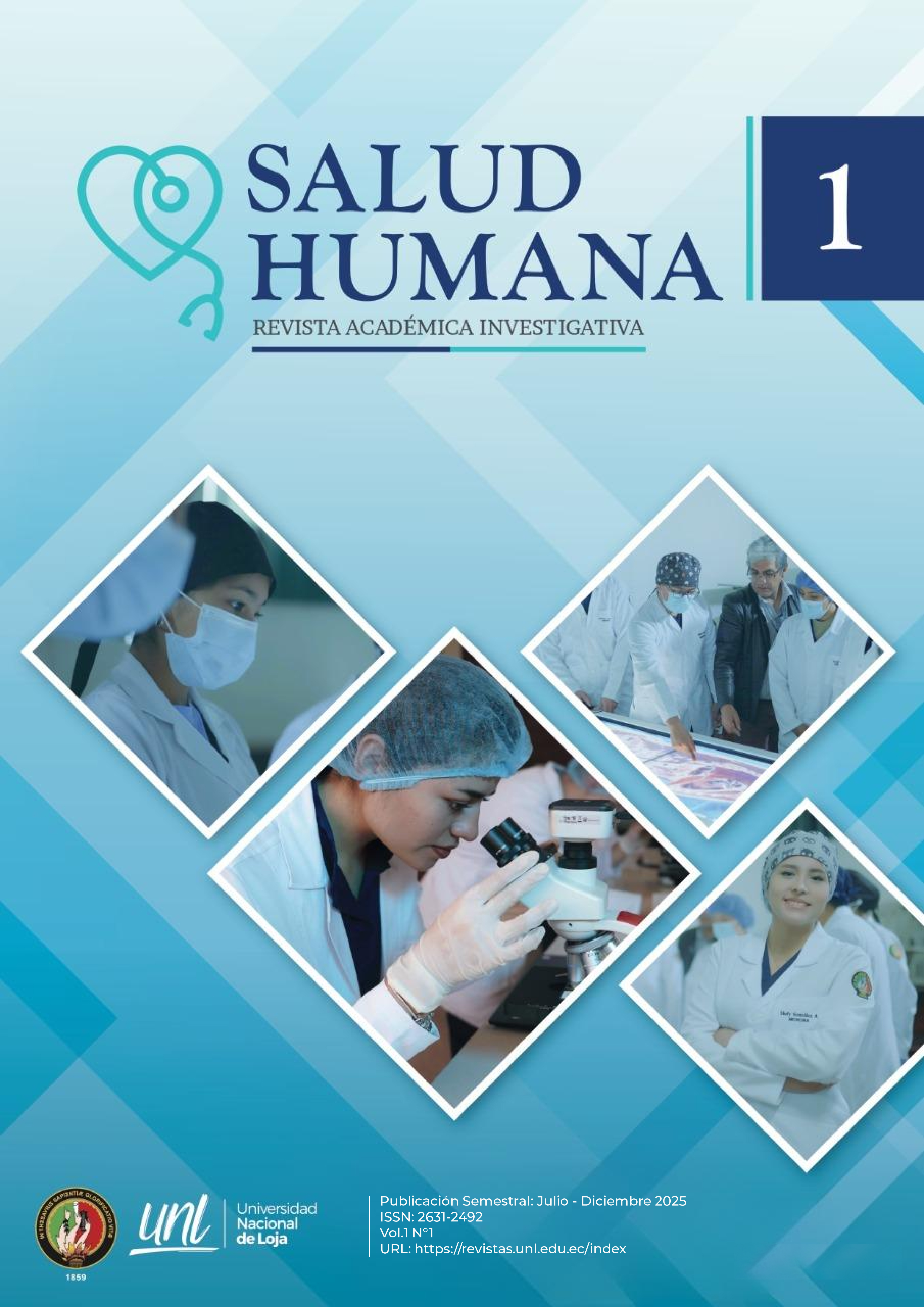ALK-positive anaplastic large cell non-Hodgkin lymphoma
DOI:
https://doi.org/10.54753/rsh.v1i1.2454Keywords:
Hematology, T lymphocytes, Anaplastic lymphomaAbstract
Anaplastic large cell lymphoma (ALCL) is a rare form of non-Hodgkin lymphoma. It is a serious type of cancer that affects cells called T lymphocytes. Some forms of ALCL are considered aggressive and spread quickly. Others grow more slowly. Below is a literature review and presentation of ALCL in the context of a clinical case. We report a case of an 83-year-old male patient with a medical history of hypertension, Alzheimer's disease, and prostatic hypertrophy under apparently regular management. He presented with a 4-month clinical history characterized by the appearance of papular lesions on the face, shoulders, posterior thorax, abdomen accompanied by hyperkeratosis of the bridge of the nose and intense pruritus. Approximately one month ago, the lesions increased in size and spread to the palms of the hands, gluteal region, and lower limbs, with marked weight loss. Additional tests, including skin biopsy, revealed proliferation of atypical lymphocytes consistent with immunohistochemical anaplastic large cell lymphoma. Anaplastic large cell lymphoma is a specific type of lymphoma that originates in T cells. This type of lymphoma is known for its aggressive and heterogeneous clinical nature. The treatment of this specific type of non-Hodgkin lymphoma that primarily presents in the skin should be carried out in a collaborative and multidisciplinary manner, involving specialists in hematology and dermatology to ensure a comprehensive and effective approach.References
[1] Andrade, J., Meiss, R., Chuit, R., & Abeldaño, A. (2014). Linfomas cutáneos primarios en la República Argentina. Boletín de la Academia Nacional de Medicina, 92(1), 81–91.
[2] Chandramohan, J., Ganapule, G., Sigamani, E., George, B., Korula, A., & Manipadam, M. T. (2022). ALK-positive large B-cell lymphomas: A clinicopathologic study. Indian Journal of Pathology and Microbiology, 65(2). https://doi.org/10.4103/IJPM.IJPM_627_21
[3] Chihara, D., & Fanale, M. A. (2017). Management of anaplastic large cell lymphoma. Hematology/Oncology Clinics of North America, 31(2), 209–222. https://doi.org/10.1016/j.hoc.2016.11.001
[4] Halpern, G. A., Miziara Brochi, L., Gomes, C., Lachter Zusman, G., Carvalho de Macedo, F., & Damasceno Rodrigues, J. A. (2024). Non-Hodgkin’s anaplastic large T-cell lymphoma: A case report. Cureus. https://doi.org/10.7759/cureus.63040
[5] Irshaid, L., & Xu, M. L. (2020). ALCL by any other name: The many facets of anaplastic large cell lymphoma. Pathology, 52(1), 100–110. https://doi.org/10.1016/j.pathol.2019.09.007
[6] Karki, N. R., Badin, K., Savage, N., & Bryan, L. (2021). Leukaemic relapse of anaplastic large cell lymphoma, ALK negative. BMJ Case Reports, 14(2). https://doi.org/10.1136/bcr-2020-239213
[7] Lannon, M., Li, J.-Q., Marvin, C., & Wang, B. H. (2023). ALK-negative CNS anaplastic large cell lymphoma: Case report and review of literature. British Journal of Neurosurgery, 37(5), 1245–1250. https://doi.org/10.1080/02688697.2020.1839630
[8] Leventaki, V., Bhattacharyya, S., & Lim, M. S. (2020). Pathology and genetics of anaplastic large cell lymphoma. Seminars in Diagnostic Pathology, 37(1), 57–71. https://doi.org/10.1053/j.semdp.2019.12.002
[9] Pacheco Román, C., Calderón Anticona, M., Barrionuevo, C., & Gomez Moreno, H. (2022). Anaplastic large T-cell lymphoma: 10-year experience at the National Institute of Neoplastic Diseases, Lima - Peru. Revista de la Facultad de Medicina Humana, 22(3), 547–555. https://doi.org/10.25176/RFMH.v22i3.5027
[10] Ruiz-Arriaga, L. F., Landgrave-Gómez, I., Toussaint, S., Lacy-Niebla, R. M. del C., & Vega-Memije, M. E. (2019). Linfoma anaplásico de células T grandes primario cutáneo CD30+: Serie de nueve casos. Gaceta Médica de México, 155(2). https://doi.org/10.24875/gmm.18004656
[11] Savage, K. J., Harris, N. L., Vose, J. M., Ullrich, F., Jaffe, E. S., Connors, J. M., Rimsza, L., Pileri, S. A., Chhanabhai, M., Gascoyne, R. D., Armitage, J. O., & Weisenburger, D. D. (2008). ALK- anaplastic large-cell lymphoma is clinically and immunophenotypically different from both ALK+ ALCL and peripheral T-cell lymphoma, not otherwise specified: Report from the International Peripheral T-Cell Lymphoma Project. Blood, 111(12), 5496–5504. https://doi.org/10.1182/blood-2008-01-134270
[12] Sociedad Argentina de Dermatología. (2007). Consenso: Linfomas cutáneos primarios. https://sad.org.ar/wp-content/uploads/2019/10/Consenso-Linfomas-Primarios-Cut%C3%A1neos-%E2%80%93-2007.pdf
[13] Stein, H., Mason, D. Y., Gerdes, J., O’Connor, N., Wainscoat, J., Pallesen, G., Gatter, K., Falini, B., Delsol, G., Lemke, H., Schwarting, R., & Lennert, K. (1985). The expression of the Hodgkin’s disease associated antigen Ki-1 in reactive and neoplastic lymphoid tissue: Evidence that Reed-Sternberg cells and histiocytic malignancies are derived from activated lymphoid cells. Blood, 66(4), 848–858.
[14] Tsuyama, N., Sakamoto, K., Sakata, S., Dobashi, A., & Takeuchi, K. (2017). Anaplastic large cell lymphoma: Pathology, genetics, and clinical aspects. Journal of Clinical and Experimental Hematopathology, 57, 120–142. https://doi.org/10.3960/jslrt.17023
[15] Zhang, X. R., Chien, P. N., Nam, S. Y., & Heo, C. Y. (2022). Anaplastic large cell lymphoma: Molecular pathogenesis and treatment. Cancers, 14(7). https://doi.org/10.3390/cancers14071650




